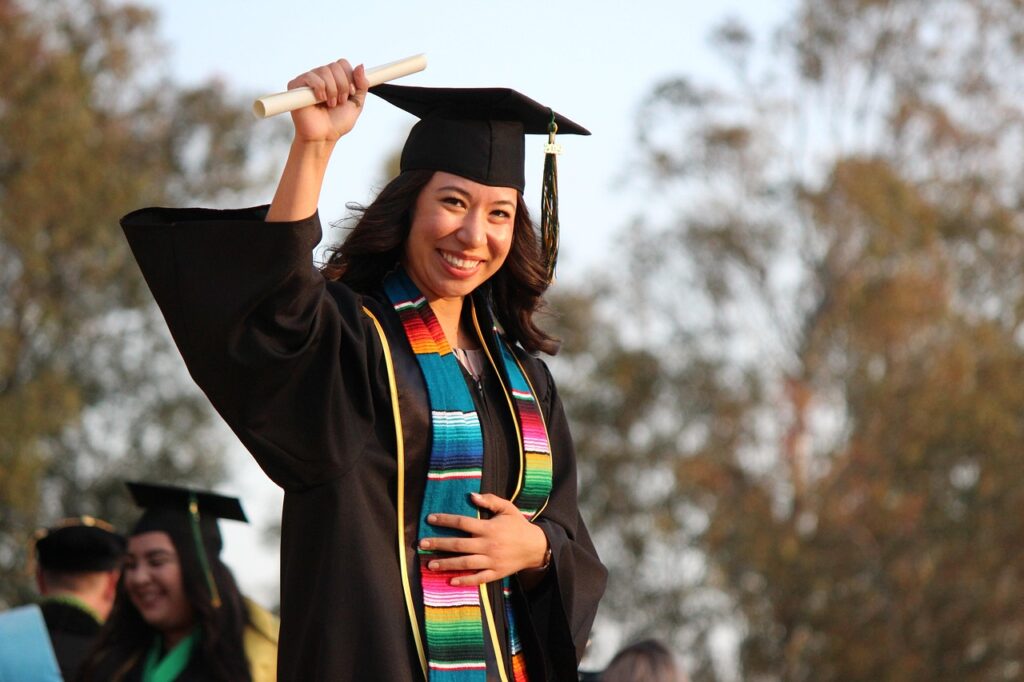Introduction
Studying in the United States can be expensive, especially for international students. Tuition fees, living expenses, and personal costs can quickly add up. This is where Work-Study Programs in USA play a vital role. These programs give students the opportunity to study and earn together by working part-time jobs—usually on campus—while pursuing their degree.
Unlike traditional part-time jobs, work-study programs are funded through financial aid, ensuring students gain relevant experience without overwhelming their studies.
In this article, we’ll explore:
- What work-study programs are
- Eligibility criteria
- Benefits and drawbacks
- Top U.S. universities offering work-study
- Application process
- Tips for balancing work and study
What are Work-Study Programs in USA?
Work-study programs are part of the Federal Student Aid initiative that provides part-time jobs for undergraduate and graduate students. These jobs are designed to help students cover educational expenses and gain practical experience.
Key points:
- Funded by the U.S. government or universities.
- Students typically work 10–20 hours per week.
- Jobs are related to students’ field of study or community service.
- Both U.S. citizens and eligible international students (through campus-based programs) can benefit.
Why Choose Work-Study Over Regular Part-Time Jobs?
| Feature | Work-Study Jobs | Regular Part-Time Jobs |
|---|---|---|
| Connection to Studies | Often related to field of study | Usually unrelated (retail, food service, etc.) |
| Location | On-campus or community service positions | Off-campus (restaurants, malls, etc.) |
| Hours Per Week | 10–20 hours (flexible for students) | Up to 40 hours, less flexible |
| Impact on Financial Aid | Counted as financial aid, reduces debt | Income may reduce financial aid eligibility |
| Networking Opportunities | High—professors, campus staff, research | Limited—mostly employer-based |
Verdict: Work-study offers a more structured, student-friendly way to earn money while building relevant career skills.
Benefits of Work-Study Programs in USA
- Financial Support – Helps cover tuition fees, textbooks, and living expenses.
- Flexible Hours – Designed to fit student schedules, unlike many part-time jobs.
- Skill Development – Gain professional and academic skills relevant to your field.
- Networking Opportunities – Work with faculty, researchers, and campus organizations.
- Reduced Student Debt – Counted as financial aid, reducing reliance on loans.
Eligibility for Work-Study Programs
To qualify, students must meet specific criteria:
- For U.S. students: Apply through the FAFSA (Free Application for Federal Student Aid).
- For international students: Some universities offer institutional work-study or on-campus jobs under F-1 visa regulations.
- Must maintain satisfactory academic progress.
- Enrollment in a participating university program.
Top USA Universities Offering Work-Study Programs
Here’s a list of leading universities known for strong work-study opportunities:
| University | Work-Study Highlights |
|---|---|
| Harvard University | Wide range of on-campus research and library jobs. |
| Stanford University | Tech-focused research assistantships and flexible student jobs. |
| University of California System | Thousands of students benefit from work-study across all UC campuses. |
| New York University (NYU) | Extensive on-campus jobs in business, media, and research labs. |
| Arizona State University (ASU) | Offers online and on-campus work-study roles, highly accessible to international students. |
Work-Study for International Students
While federal work-study is mostly limited to U.S. citizens, many universities provide campus-based work-study opportunities for international students.
Examples include:
- Library and research assistant jobs
- IT help desk positions
- Teaching and administrative support roles
- Student services and campus facilities jobs
Pro Tip: International students on an F-1 visa can work up to 20 hours per week on-campus and full-time during breaks.

How to Apply for Work-Study Programs in USA
- Check Eligibility – U.S. students: complete FAFSA; International students: ask your university about on-campus work-study.
- Indicate Interest – On the FAFSA form, select “Yes” to work-study programs.
- University Notification – Once eligible, your school will list available jobs.
- Apply for Positions – Submit applications and attend interviews.
- Start Working – Work part-time while balancing academics.
Balancing Work and Study
Many students worry that working may affect their grades. Here are some strategies:
- Time Management Tools – Use planners or digital apps.
- Prioritize Classes – Always schedule work around your academic requirements.
- Communicate with Supervisors – Supervisors in work-study jobs understand student priorities.
- Limit Hours – Stick to 15–20 hours max per week.
FAQs: Work-Study Programs in USA
Q1. Can international students apply for federal work-study programs?
No, federal work-study is for U.S. citizens, but international students can apply for campus jobs offered by universities.
Q2. How much can I earn through work-study in the USA?
Typically between $2,000–$5,000 per year, depending on hours and pay rates.
Q3. Do work-study earnings affect financial aid packages?
No, work-study earnings are counted as financial aid and don’t negatively impact eligibility.
Q4. What types of jobs are offered in work-study?
Common roles include library assistants, lab assistants, tutors, IT help desk, and administrative support.
Q5. How do I balance work-study with academics?
Use time management, prioritize coursework, and choose flexible roles aligned with your field.
Internal & External Links
- Internal Links (suggestions for your blog):
- External Links (authoritative sources):
Conclusion
Work-study programs in the USA are a powerful way to reduce educational costs, gain experience, and build a professional network while studying. For U.S. students, federal work-study provides structured aid, while international students can still benefit from campus-based opportunities.
By choosing a university with strong work-study options, you can balance academics with part-time work, reduce student debt, and prepare for a successful career.
